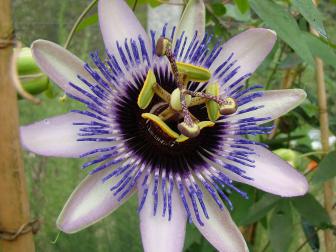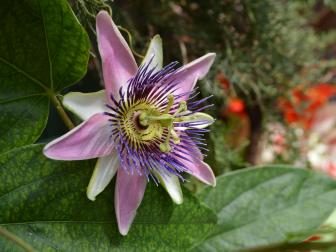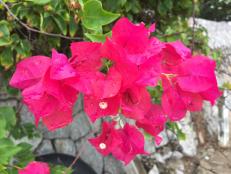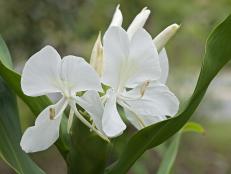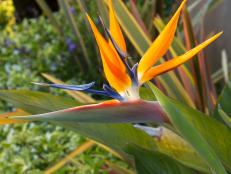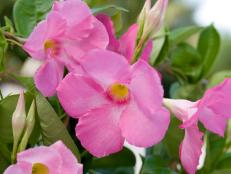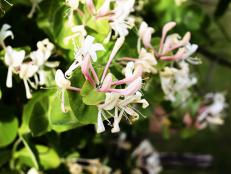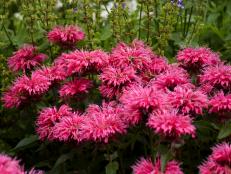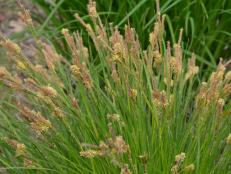Growing Passionflower Vine
Add exotic flair to your garden with the intricate blooms of Passiflora, the passionflower vine. This heat-loving vine is a cinch to grow.
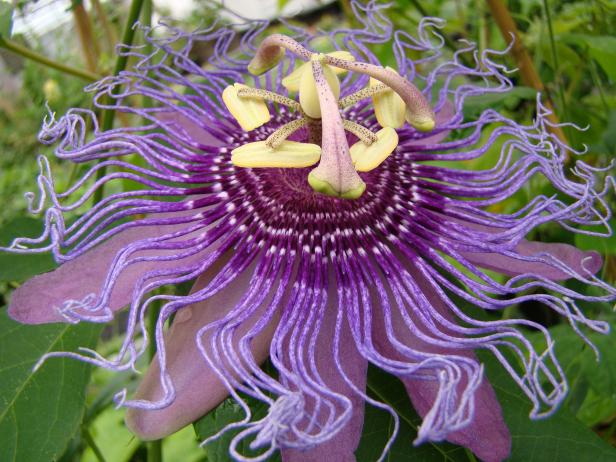
Courtesy Brushwood Nursery / GardenVines.com
Hardy in Zones 7 to 11, passion flower 'Inspiration' is a hybrid loaded with light to deep purple blooms. The vines grow 10 to 15 feet and are a good choice for containers. If you grow your passionflowers in the ground, mulch them deeply to help them survive the winter cold.
If you're trying to weave a tropical thread into your outdoor spaces, passionflower vine is the plant for you. You can grow a fruiting passionflower, the classic blue passionflower (Passiflora caerulea) or the hardy maypop passionflower, just to name a few. No matter which vine you choose, you'll be wowed by the intricately beautiful blooms.
Passionflowers go by the botanical name Passiflora, a plant group that includes roughly 500 species. Most are vines, and some, like Passiflora incarnata (also known as maypop), are hardy as far north as Zone 5 and grow like weeds in the South. If your goal is a fruiting passionflower vine, choose Passiflora edulis. It's the passion fruit plant that's raised for commercial fruit production.
Botanical name: Passiflora
Common Name: Passionflower or passion vine
Bloom Time: Summer to early fall
Bloom Color: Purple, white, yellow and red
Special features: Butterfly host plant
Plant Type: Annual or perennial
Size: Grows up to 20 to 25 feet in one season
USDA Hardiness Zones: 5 to 11, depends on type
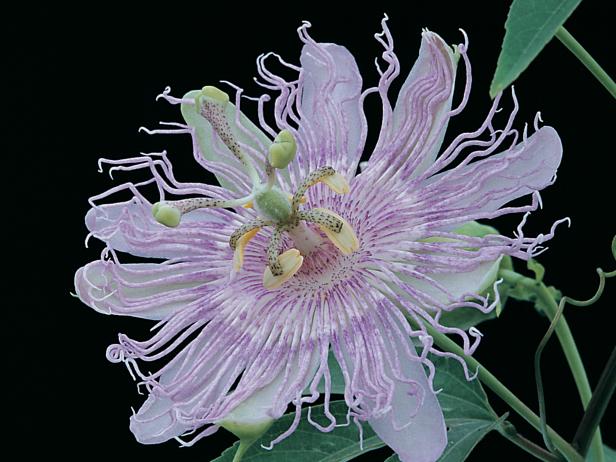
Image courtesy of Johnny's Selected Seeds
Passionflower buds unfurl to reveal intricate blooms that are typically pollinated by carpenter bees. This beauty is Passiflora incarnata, also known as maypop or purple passionflower. It's native in the Southeast, where it's often considered a weed. This is the passionflower to choose for up North, too, since it's hardy in Zones 5 to 9.
All passionflower vines grow quickly, adding as much as 20 to 25 feet of growth in a single season. It's a great choice for blanketing a fence or trellis with beautiful, fragrant blooms. Passion fruit flower vines serve as host plants for several butterflies, and blossoms beckon bees, hummingbirds and other pollinators. Deer and rabbits tend to ignore passion vines.
13 Stunning Passionflower Varieties 13 Photos
Many passionflowers grow wild in tropical regions, but their flamboyant flowers can also brighten your backyard.
These pretty plants tolerate heat and humidity, making them a great choice for reliable summer color. Most thrive in sun and adapt readily to containers. Learn what you need to know to grow your own crop of passion fruit flowers.
Where to Plant Passionflower Vine
Choose a sunny spot for your passion fruit plants, which should receive at least four hours of sun each day — more for plants in northerly regions. In southern zones, place passion vines where they'll get some shade during the hottest afternoon sun.
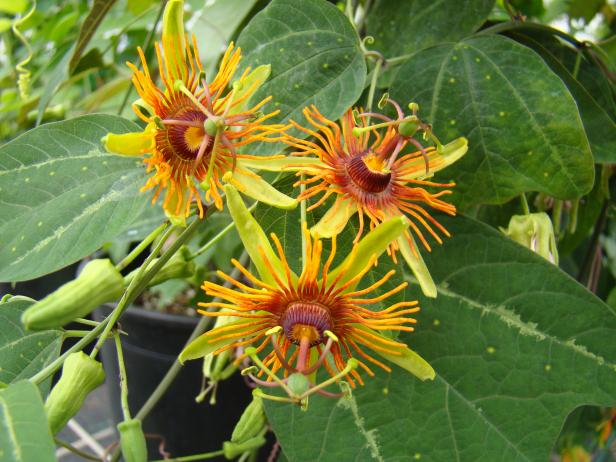
Courtesy Brushwood Nursery /GardenVines.com
Vigorous 'Sunburst' vines have blooms with unusual, orange corona filaments and green sepals. The leaves are sprinkled with yellow spots, sometimes called "nectar dots," and stripes, and they're purple underneath. Give your passionflowers well-drained soil; most benefit from feeding with a balanced fertilizer in early spring and again in midsummer.
Passion fruit plants tolerate and can grow in light shade, but they'll tend to have fewer flowers. If you're growing a fruiting passionflower, the plant definitely needs sun to ensure you'll get plenty of blossoms that can fade to form fruits.
The ideal soil for passionflower vines is well-drained. They'll grow in rich soil that has plenty of organic matter, but also thrive in rocky or gravelly, lean soil. If you have clay soil, though, it's a good idea to add organic matter, such as compost or composted manure, to help improve soil drainage. Ultimately different passion vines thrive in different types of soil, so be sure to read the plant tag and do a little research to make sure you're giving your plant the ideal root environment.
Colorful Climbers 12 Photos
Want vertical interest in your garden? All it takes is a simple trellis and a beautiful vine like passionflower. Try one of these for easy-growing good looks.
In northern gardens, it's best to tuck perennial passionflower vines into a protected spot, like along a south-facing wall, where soil tends to stay warmer. It's also important to plant passionflower vine beside some kind of support: a trellis, fence, arch or obelisk tuteur.
When to Plant Passionflower Vine
In most regions, spring is the ideal time for planting a passion vine. In northern zones, wait until all danger of frost has passed. Even the hardy passion fruit plants are slow to take off in cool soil. Perennial passionflower vines are very late risers in the garden, poking through soil only after it's really warmed up.
Caring for Passionflower Vine
Watering
During the first growing season after planting, water passion vines regularly. Aim to keep soil consistently moist. Passionflower vines grow fast, which means they need adequate water to support that growth. If your soil tends to drain fast, you'll need to water your passion fruit plants more often.
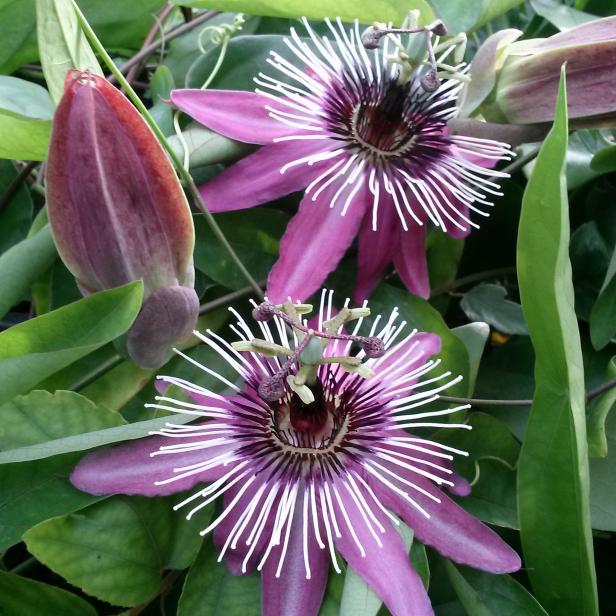
Courtesy of Brushwood Nursery/GardenVines.com
'Victoria' is a vigorous, evergreen passionflower in Zones 10 and 11. It grows 20 to 40 feet, so give the vines plenty of support. Its big, dark pink flowers have white filament tips.
Passionflowers in pots usually need to be watered daily by the time summer heat arrives. Plan to water plants when soil is dry to the touch to the middle knuckle of your index finger.
Maintain a 2- to 3-inch-thick mulch layer on the soil around the base of your passion flower vine to help soil retain moisture. Use an organic mulch, such as triple shredded bark, pine needles, fir bark fines or whatever is locally available in your region.
Feeding
For perennial passion fruit plants, fertilize in spring as new growth begins. With newly planted passion vines that you're tucking into planting beds, fertilize when you start seeing new leaves unfurl. Give plants another dose of fertilizer in midsummer, mixing it into the top inch of soil.
A good plant food choice is a tropical fruit fertilizer, like one for bananas. This type of fertilizer is especially ideal for passion flower vines that you're growing for fruit production.
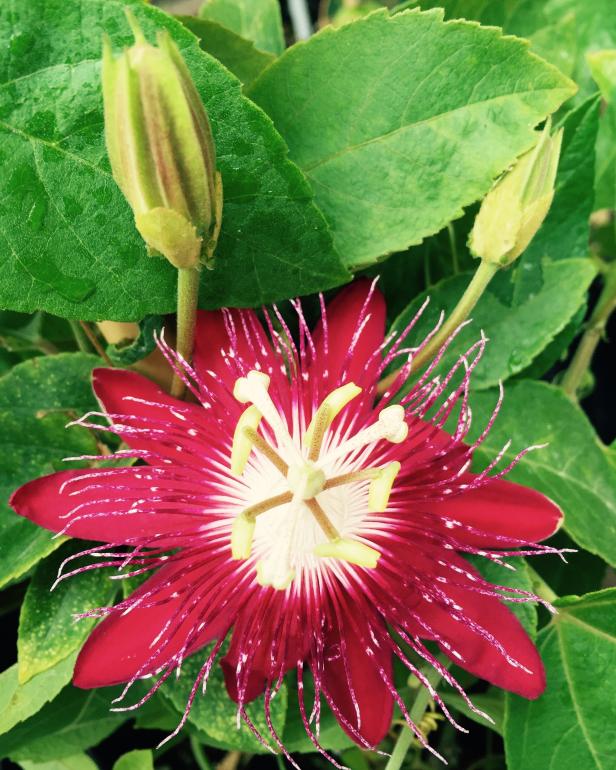
Courtesy of Easy To Grow Bulbs
Most passionflowers have blue or purple blooms, but 'Lady Margaret' bears strawberry-red blossoms with snowy centers. Give white shrub roses a punch of color by letting these vines weave between the branches, or let the 8-foot vines climb a fence or wall. If you live where the winters are cold, overwinter your plant on a sunny windowsill.
One of the best ways to nourish perennial passion vines is to prepare soil prior to planting by adding organic matter and also mulching annually with compost or other organic matter. Many gardeners use this method to nourish mature plants without additional fertilizer.
For passionflower vines in containers, mix a slow-release fertilizer into soil prior to planting. Choose a fertilizer with low numbers (something like 3-1-2). Plan to add more to the top of soil in four to six weeks, gently scratching it into the soil. Skip bloom booster-type products, and just focus on giving your passion vines a steady diet.
Pruning
Prune perennial passion vines in late winter before new growth begins. Cutting plants encourages branching and lush foliage, which means you'll get more flowers and fruit. You can actually cut passion fruit vines at any point in the growing season if growth is getting rambunctious and moving into areas where you don't want it to go.
Most of the time, for passion fruit plants in containers, you probably won't need to prune vines, but feel free to do so as needed. You won't harm overall plant health.
Fruiting Passionflower Vines
If your goal is growing vines for fruiting, choosing the right passionflower species is important. Passiflora edulis is the passion fruit that's raised commercially. There are actually two different types. One produces purple fruit, which is said to be less acidic and more flavorful. The other type yields yellow fruits.

Courtesy of Brushwood Nursery / GardenVines.com
Pure white 'Incarnata Alba' is native to the eastern US. This passionflower's edible fruits can be made into jams or other dishes. The herbaceous plants spread by underground runners and are hardy in Zones 6 to 10.
In northern zones, if a fruiting passionflower is your goal, choose Passiflora incarnata, also known as maypop. The name maypop comes from the popping sound the ripe, hollow fruits make when you step on them. Plants need to be cross-pollinated for flowers to form fruit, so plan to buy two or three maypop plants to grow on the same trellis or near each other in your yard.
To harvest ripe fruit on your passionflower vine, you need a long growing season. In the South, the native maypop forms fruit readily. In northern zones, it can be tougher to get a harvest before frost. Growing vines in pots and moving them indoors into a warm, sunny spot may help ripen fruits.
Types of Passionflower Vines
Look for passion vines from reputable nurseries and garden centers. Online fruit plant nurseries typically carry the best fruiting passion flower types.
- Passiflora caerulea (Blue Passion Flower Vine) — White, deep purple and lavender paint the blooms of this stunning passionflower. Vines grow 3 to 8 feet wide and 10 to 40 feet tall. Ripe fruits are bright gold and edible, although not too tasty. Fruits can be used as a substitute in blackberry pie. Hardy in Zones 7-9.
- Passiflora incarnata (Maypop) — White blooms with a purple crown create a striking sight in the garden. Plants grow 3 to 6 feet wide and 3 to 8 feet tall. Hardy in Zones 6-10, with some winter survival in protected spots in Zone 5. Established vines spread by underground stems or rhizomes and may pop up a few feet from where you plant them. 'Alba Supernova' is a white variety with 5-inch-wide blossoms.
- Passiflora edulis (Purple Passionflower Vine) — White blooms topped with purple steal the spotlight on this passion vine, but it's the fruits that really command attention. This is the variety raised for commercial fruit production. Plants grow 3 to 5 feet wide and 10 to 15 feet tall. Hardy in Zones 10-12.
- Passiflora coccinea (Red Passion Flower Vine) — Vibrant red flowers lure hummingbirds to the garden. Fruits are edible. Plants grow 3 to 5 feet wide and 10 to 12 feet tall. Hardy in Zones 10-12. In areas where this passionflower isn't hardy, grow it in containers you can move indoors for winter.
How to Use Passionflower Vine
in the Landscape
Passion vines are relatively undemanding in terms of care. In the landscape, use them as you would any other vine. Just be sure to give it a trellis that's tall and strong enough to support it as it climbs.
Passionflower plants climb using tendrils — small stems that twist and wrap around a support. If you're using a trellis like a chunky lattice or split-rail fence, attach something like chicken wire, 16-gauge fence wire or trellis netting to give the vine something to grab as it hoists itself heavenward.
Some of the best ways to use passionflower vine include:
- Living screen on a fence
- Wildlife garden
- Creating shade on a pergola
- Growing through roses or other shrubs
- Butterfly garden
- In a container trained on a teepee trellis
- Edible landscape
Passionflower Vines and Butterflies
Some passionflower vines are host plants for butterflies, which lay eggs on the plants. Maypop (Passiflora incarnata) hosts gulf fritillary, zebra and Julia longwing and variegated fritillary butterflies.
Being a butterfly host plant means that caterpillars will devour leaves. For mature passion vines, that's not a problem. Vines grow so quickly they recover from being munched.
For young vines, too many caterpillars could harm the plant. If your young passionflower plant has several caterpillars chomping leaves, you could wind up with a defoliated plant. Learn which type of butterfly caterpillar you have, and move them to another appropriate host plant. Many times local botanic gardens with butterfly gardens or an indoor butterfly atrium welcome donations of butterfly caterpillars. If you have a garden near you, contact them for details.
Passionflower FAQs
Do I need to deadhead passion fruit flowers?
Each passionflower only lasts one day. It opens in the morning and closes at dusk. If it's pollinated, it can form fruit. If the passion fruit flower isn't pollinated, it will drop from the vine, so it's really not necessary to deadhead or remove the spent blooms.
What should I do to protect a fruiting passion flower for winter?
Grow non-hardy passionflower vines in pots and move them indoors for winter. For hardy vines in northern zones, let plants die back naturally. After the ground freezes, mulch the base of the plant with straw or shredded leaves for insulation. In spring, remove the mulch. Passionflower vines are some of the last plants to poke through soil in spring.
Is fruiting passionflower invasive?
Some passion vines can be invasive. The maypop (Passiflora incarnata) spreads by underground stems or rhizomes that send up plenty of suckers. Snap off these sprouts as they appear. Southern gardeners can combat the spread somewhat by growing maypop in a pot, but don't be surprised if it escapes through the drainage hole into your garden. Check with your local extension office to learn if passion flower vines might be a problem in your area.







